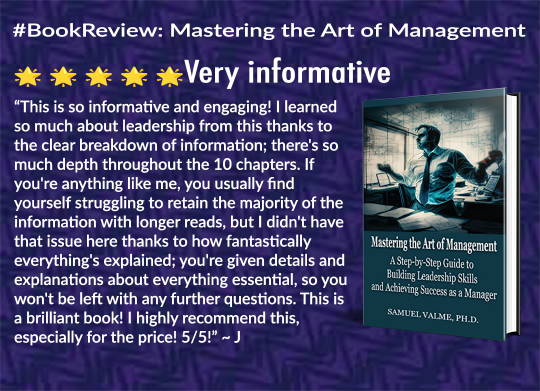#ClarityInWriting
Explore tagged Tumblr posts
Text
The Art of Proofreading Your Personal Statements

Writing personal statements can be a daunting task, but fear not! With a sprinkle of creativity and a dash of burstiness, you can turn your personal statement into a masterpiece. In this guide, we'll explore the importance of proofreading and how it can elevate your writing to new heights. Let a proofreader or editor tweak your words to perfection now!
Why Proofread?
Before we dive into the creative realm, let's address the elephant in the room: proofreading. It's the unsung hero of great writing. A well-proofread personal statement not only showcases your ideas effectively but also reflects your attention to detail. Imagine it as the final polish on a gem, bringing out its true brilliance. The Power of Creativity

Now, let's inject some creativity into your writing. Personal statements are your canvas, and words are your colors. Paint a vivid picture of your experiences, passions, and aspirations. Make the admissions committee feel your story, not just read it."Creativity is intelligence having fun." - Albert EinsteinDon't be afraid to step outside the conventional boundaries. Use metaphors, anecdotes, and descriptive language to captivate your reader's imagination. Show, don't just tell, how your journey has shaped you. Read More… Read the full article
#AdmissionsProcess#ApplicationEssays#ApplicationSuccess#AttentiontoDetail#ClarityinWriting#CraftingPersonalNarratives#Editing#GrammarCheck#LanguagePrecision#PersonalStatement#PolishingYourWriting#Proofreading#ProofreadingTechniques#RevisionStrategies#Self-Editing#StatementofPurpose#WritingGuidance#WritingImprovement#WritingSkills#WritingTips
0 notes
Text
How to Write an Executive Summary
Understanding the Role of an Executive Summary
An executive summary is a vital component of various business documents, proposals, and reports. It's a concise yet comprehensive overview of the main points, findings, and recommendations contained in a more extensive document. Whether you're writing a business plan, a research report, or a proposal, mastering the art of creating an effective executive summary is essential. In this article, we'll explore the step-by-step process to write an engaging and informative executive summary.
Understanding the Purpose
Before we dive into the process, let's clarify the purpose of an executive summary. It serves several critical functions:
Concise Communication: It condenses complex information into a manageable format, allowing readers to quickly grasp the main ideas.
Decision-Making: It provides key information for decision-makers, enabling them to decide whether they need to read the full document.
Overview: It offers a comprehensive perspective on the document's content, helping readers understand the document's scope and primary focus.
Accessibility: It can be used as a standalone document, separate from the full report, making it easy to distribute and share with a broader audience.
Now, let's explore the steps to write an effective executive summary.
Step 1: Understand Your Audience
Begin by identifying your target audience and their specific needs. Tailor the executive summary to address the concerns and interests of your readers. Consider what information they prioritize and how they plan to use it. Knowing your audience is the first key to creating a compelling executive summary.
Step 2: Read the Full Document
Before you start writing, read the entire report, proposal, or plan. Understand the main findings, key recommendations, and supporting evidence. This step is crucial because it helps you select the most critical information to include in the summary. The executive summary should encapsulate the essence of the complete document.
Step 3: Identify Key Points
Identify the most important points in the document. These might include the main findings, conclusions, recommendations, and any data or evidence that supports them. Focus on the essentials; avoid unnecessary details. Keep in mind that the executive summary is not a miniaturized version of the full document but rather a snapshot of the most significant elements.
Step 4: Use a Clear Structure
An effective executive summary typically follows a clear structure, making it easier for readers to navigate. A common structure includes:
Introduction: Provide a brief introduction to the document's purpose and scope. Set the stage for what the readers can expect.
Main Findings: Highlight the most critical findings or results. Be succinct but clear in your presentation.
Key Recommendations: Summarize the main recommendations or actions to be taken based on the findings. Explain why these recommendations are crucial.
Supporting Evidence: Include essential data, statistics, or evidence that underpin your findings and recommendations. Use graphs, charts, or tables when appropriate.
Conclusion: Provide a brief conclusion or call to action. Restate the significance of your findings and recommendations.
Step 5: Write Succinctly
Keep your writing clear and concise. Use simple, straightforward language. Avoid jargon or technical terms that might confuse the reader. Each sentence should be sharp and to the point. Aim for brevity without sacrificing clarity.
Step 6: Use Bullet Points and Headings
Break down information into bullet points, headings, and subheadings to make it easier for readers to scan the content. Use formatting elements like bold text or italics to emphasize important points. Visual cues help draw attention to key information.
Step 7: Revise and Edit
After drafting the executive summary, take the time to revise and edit it carefully. Eliminate any unnecessary words, sentences, or redundant information. Check for grammar and spelling errors. Ensure that the summary flows smoothly and logically.
Step 8: Seek Feedback
Don't hesitate to share your executive summary with colleagues, mentors, or peers for feedback. Fresh eyes can provide valuable insights and catch any overlooked mistakes or opportunities for improvement.
Conclusion
Writing an effective executive summary is an art that can significantly enhance your ability to communicate essential information to your audience. By understanding your readers, selecting key points, and structuring your summary logically, you can create a powerful tool for decision-makers. Practice and continuous improvement will help you perfect this critical skill in business and professional writing.
#ExecutiveSummary#BusinessWriting#ReportWriting#ProfessionalCommunication#WritingTips#EffectiveCommunication#SummaryWriting#ProposalWriting#WritingSkills#BusinessCommunication#DocumentStructure#CommunicationSkills#BrevityMatters#ClarityInWriting#DocumentPreparation
0 notes
Text
🌟 🌟 🌟 🌟 🌟 Very informative

Purchase a copy of the book TODAY --> https://amzn.to/454ML6p
#InformativeEngagement#LeadershipInsights#ClearBreakdown#DepthInChapters#LearningExperience#KnowledgeBoost#EngagingContent#LeadershipJourney#IndepthExploration#BookRecommendation#PriceWorthy#5StarRead#ClarityInWriting#ThoroughExplanations#EnhancedUnderstanding#RetainableKnowledge#FantasticExposition#ComprehensiveGuide#InsightfulReading#LearningMadeEasy#TopNotchContent#ThoroughUnderstanding#MustReadBook#AffordableWisdom#HighlyRecommended#KnowledgeTreasure#DeepDiveLearning#SkillBuilding#InsightfulBook#ClearExposition
1 note
·
View note
Quote
Value your writing skills as much as your clients do.
Jawad Khan
http://www.bookcrossing.com/mybookshelf/OsaAso
0 notes
Photo

Writing effectively is among the most significant abilities, particularly within the company. If need to become a productive writer you must write deliberate sentences, mastering grammar, understand the power of writing and words concisely. Paramount Training and Development can help you, their coaching can allow you to understand on how to produce appropriate memos, emails, reports and handwritten letters, and the way to write concisely and much more.
http://postbits.net/p/paramountplus-training/
#writingeffectively#clarityinwriting#writingtips#howtowrite#learninganddevelopment#effectivewritingtechniques#careergoals
0 notes